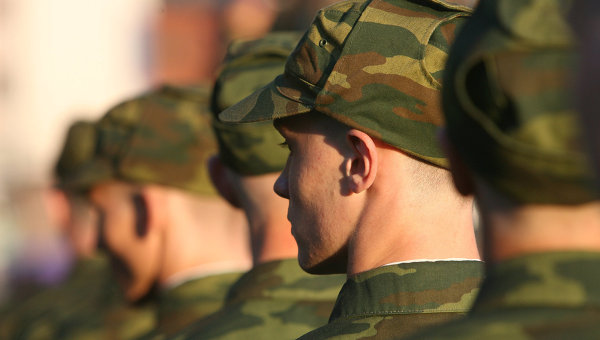
Moscow Resurrects Battalion Tactical Groups
Publication: Eurasia Daily Monitor Volume: 9 Issue: 203
By:

At the heart of the reform of Russia’s Armed Forces, launched in October 2008, was the aim to create “permanent readiness” brigades, principally to facilitate rapid deployment and enhance combat capability and combat readiness. It is now a source of furrowed brows among the country’s top brass. Problems linked to manpower, such as a lack of sufficient numbers of contract personnel and ongoing problems with the conscript pool serving for twelve months rendered these high aims open to question. Following the initial creation of the new brigade-based structure, the claims in late 2009 concerning the level of readiness in these units left many questioning the official line. Russian President Vladimir Putin dismissed his Defense Minister Anatoliy Serdyukov on November 6, mainly due to a corruption scandal, however, there were clear signs that the “Serdyukov” reform was already in trouble. It may now fail, go into limbo, or await recalibration after the new minister, Sergei Shoigu, settles into the post (Interfax, November 6). Recent moves by the General Staff seem to recognize the failure in the past four years to activate these brigades in the designed manner. Now the preference is for battalion tactical groups, which formed the basis of Russian counter-insurgency operations in the second Chechnya war (Isvestiya, October 28; Ekho Moskvy, October 27).
An element of the latest reform twist may relate to Russian threat perception in the North Caucasus and recent calls by the local MVD in Dagestan for defense ministry reinforcement. Indeed, government-linked Central Asian analysts told Jamestown that Moscow’s real security concern about Afghanistan post-2014 relates to the potentially negative implications for the worsening insurgency in the North Caucasus. Nonetheless, Lieutenant-General Viktor Sobolev, the retired commander of Russia’s 58th Army, claims that its three North Caucasus–based combined-arms brigades are fully manned with contract soldiers (kontraktniki). And if this is the case, the planning for battalion tactical groups in every Military District (MD) implies wider concern about the reformed structures. Yet, brigade staff officers in the southern MD claim their brigades are 50 percent to 70 percent manned. But the question remains as to why Moscow has waited for four years to introduce such corrective measures in the new brigades (Svobodnaya Pressa, September 24).
In order to follow the reform chameleon, the current plans, as well as the underlying reasons for pursuing such controversial measures, must be examined. On September 19, the General Staff ordered the formation of battalion tactical groups (batalonnyye takticheskiye gruppy) in the “permanent readiness” brigades through all four reformed MDs. This was also to be conducted rapidly, with late October set as its deadline. These battalions will be staffed by 100 percent kontraktniki and will prioritize recruiting soldiers with combat experience. The commanders of the MDs will be in charge of the process of forming and introducing these new battalions. The new battalions will be formed in motorized rifle brigades and other “permanent readiness” brigades with a “large deficit of personnel.” In other words, their mere creation confirms that the brigades are nowhere near “permanent readiness.” Defense ministry sources also said the rapid formation of these units suggests that in southern MD these could be used in the near future to support the interior ministry in counter-insurgency operations (Interfax, September 19).
The deeper justification for these emergency repairs to the reform lie in the chronic problems encountered in the system of military manpower. Due to personnel shortages during the Kavkaz 2012 military exercises in September, Moscow deemed it necessary to call up 300 reservists to support regular units. The southern MD commissariat told Izvestiya that all Russian military units have “unoccupied duty positions,” which civilians would describe as vacancies. The Russian defense ministry however, characterizes these as “authorized personnel shortages.” In some of the Ground Forces brigades this means there are shortfalls of up to 50 percent of the required personnel. As an anonymous source in the southern MD commissariat noted, in combat operations up to half the personnel would be missing (Izvestiya, September 21).
Indeed, sources told Interfax that the reasons for forming the battalion tactical groups stem from the personnel shortages in the brigades, saying that the numbers were so high that the brigades did not correspond to their status of “permanent readiness.” Some brigades not only lack between 30 percent to 50 percent of required personnel but also have a large deficit of new hardware and ammunition. The shortfall in the numbers of kontraktniki and soldiers with essential military skills (mechanics, drivers, gunners, grenade launcher operators, etc) is particularly acute, and these are precisely the elements used by the General Staff in the measurement of combat readiness. Personnel shortages within these structures are also most severe at tactical-company levels (Interfax, September 19).
Colonel-General Yuriy Bukreyev, the former chief of the Ground Forces Main Combat Training Directorate, commented on the implications of this shift in the reform—“After almost four years of Army and Navy modernization, we are back where we started: with an acute shortage of enlisted and NCO personnel in the troop and permanent combat-readiness units and combined units that are undermanned. Remember how the initiators of the ‘new configuration’ of the Army in 2009 never tired of repeating that we did not need ‘paper’ divisions where the shortfall in service personnel was more than 50 percent, so it was better to use them as a base for establishing permanent combat-readiness combined-arms motorized rifle brigades while at the same time eliminating the divisional structures. Here we are, only a few years on, and it is all starting over” (Vzglyad, September 23).
Other Russian military experts offer bleak comment on the plan to form battalion tactical groups. Aleksandr Sharavin, the Director of the Political and Military Analysis Institute, noted that in the latest innovation to introduce such battalions there is clear confirmation of the lack of high combat readiness levels in many of the Ground Forces brigades. But Sharavin went much further than other commentators on the actual condition and substance of the brigades, saying that much emphasis was placed on imparting a “new appearance” to the Russian military that did not address its underlying weaknesses. Sharavin observed: “We are changing the shape but the substance remains as it was. For all the innovations introduced over the last four years, our army remains essentially a Soviet army.” He explained that the military relationships have not changed, nor has society’s negative attitude toward men in uniform; the substance has remained the same (Svobodnaya Pressa, September 24).
In relation to the timing of the decision to rapidly form battalion tactical groups, it appears that the General Staff deemed this necessary due to the deteriorating security situation in the North Caucasus, which if true, may mean that the first real combat test for the “new look” will soon emerge in Russia’s troubled borderlands.




